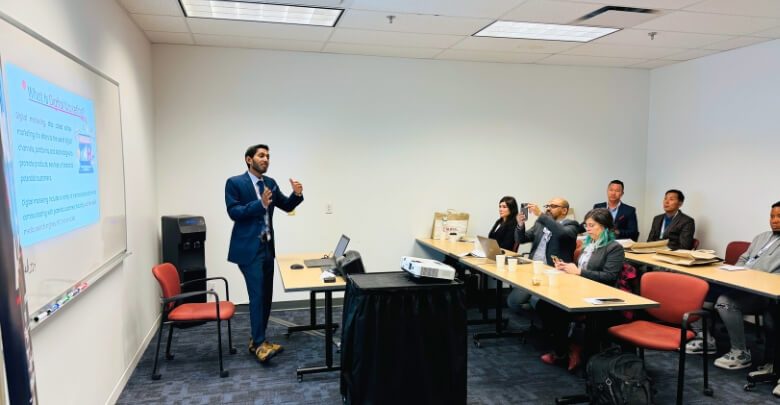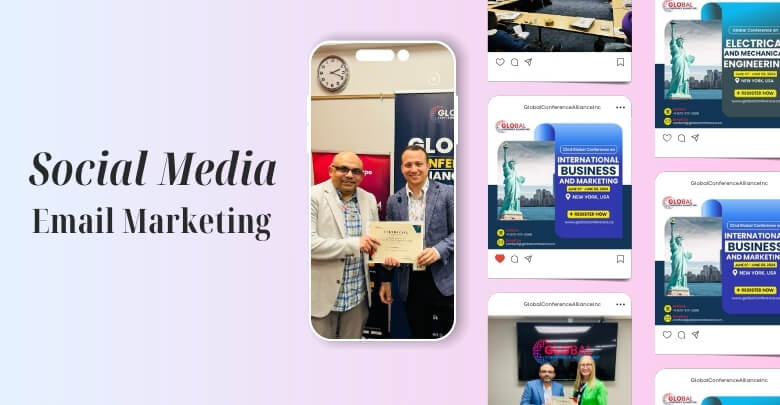Organizing a conference is a task that requires meticulous planning, attention to detail, and a keen sense of organization. Planning a conference can be exciting and daunting, involving coordinating many tasks and stakeholders to ensure a successful event. While the prospect of organizing a conference can be daunting, the value of planning cannot be overstated.
In fact, planning is critical to the success of a conference and can determine whether the event is a resounding success or a disappointing failure. As an event that brings together professionals from diverse fields and backgrounds, conferences provide opportunities for knowledge exchange, networking, and collaboration.
In this article, we will explore the importance of planning for a conference and highlight the key steps involved in organizing a successful event. Whether an event organizer or a participant, understanding the importance of planning can help you make the most of the conference experience.
Key Takeaways:
- Meticulous planning, clear objectives, and measuring success are crucial for the success of a conference.
- Choosing the right venue, assessing amenities, and evaluating costs are important factors to consider during conference planning.
- Designing a comprehensive and well-structured agenda, selecting appropriate speakers, and planning networking and social events can enhance the conference experience.
- Promoting the conference through effective marketing strategies, leveraging partnerships and sponsorships, and offering early bird discounts and storytelling can generate interest and encourage attendance.
Set Objectives and Goals
Establishing clear and measurable objectives and goals is crucial for a prominent conference organizer in planning a successful event. Define specific, attainable, relevant, and time-bound objectives to ensure the conference has a clear purpose and direction. This approach helps in effectively allocating resources, such as the budget, speakers, and marketing strategies, to achieve the intended outcomes of the event.
Measuring success is also important in determining the effectiveness of the conference. By setting key performance indicators (KPIs) and measuring them throughout the planning process, organizers can track progress and make necessary adjustments to improve the event.
Aligning goals with objectives is also important. This ensures that the conference’s objectives align with the organization’s long-term goals and that the event significantly impacts its stakeholders. Tracking progress against measurable goals also ensures the conference is on track and focuses on its intended outcomes.
Choose the Right Venue
When choosing the right venue for a conference, consider the event size, evaluate the amenities and services available, and review pricing and contract terms. The event size will determine the appropriate venue size and capacity needed to accommodate attendees comfortably.

Amenities and services, such as catering, audio-visual equipment, and parking, ensure a successful conference. Additionally, carefully reviewing pricing and contract terms will ensure that the conference budget is met and that the venue fits the conference’s needs. You can also plan for a virtual conference which won’t require spending money.
Consider the Event Size
The size of an event is a critical factor to consider during conference planning. Studies show that events with more than 1,000 attendees require significantly more resources and logistical coordination than smaller gatherings. Proper planning ensures that key aspects like scheduling, venue selection, and attendee experience are managed effectively to create a seamless event.
Event logistics, such as registration, transportation, and venue capacity, become more complex as attendance increases. Ensuring that seating, food, and restroom facilities are sufficient is crucial to avoid disruptions. A well-organized approach helps maintain efficiency, allowing attendees to focus on the sessions, discussions, and networking opportunities.
The choice of venue also depends on the event size. Larger conferences often require multiple rooms or buildings to host simultaneous sessions. Additionally, transportation and parking must be considered, especially for attendees traveling from different regions. Selecting a venue with adequate amenities is key to accommodating the needs of a diverse audience.
If you’re planning to organize an international event like a conference in Canada, it’s essential to consider these factors early, as these events draw participants from various locations. Proper coordination ensures a smooth experience, making it easier for attendees to engage, collaborate, and make the most of the event.
Evaluate Amenities and Services
Assessing the amenities and services available at potential venues is crucial in creating a positive experience for attendees and ensuring the event’s success. Service quality is key in determining the overall attendee experience, as attendees expect top-notch services and amenities.
For instance, a well-equipped venue with modern technologies, high-speed Wi-Fi, and ample networking and socializing space can positively impact the attendee experience. On the other hand, a lack of necessary amenities and services can lead to frustration and dissatisfaction among attendees.
To evaluate the amenities and services offered by potential venues, create a nested bullet point list that includes two sub-lists. Firstly, consider the quality of the venue’s services, such as food and beverage options, audio-visual equipment, seating arrangements, and other essential services. Secondly, evaluate the quantity of services, such as the number of restrooms, parking availability, and accessibility for attendees with disabilities.
By assessing these factors, conference planners can identify the strengths and weaknesses of each venue and make informed decisions about which venue best aligns with their attendees’ needs.
In reviewing pricing and contract terms, conference planners can ensure they are getting the most value for their budget while still providing attendees with the best possible experience.
Review Pricing and Contract Terms
Evaluating potential venues’ costs and contractual terms is vital to determining the financial feasibility of hosting an event. It ensures that the budget is maximized to provide the best possible experience for attendees.
When considering the pricing of a venue, negotiate with the venue representative to secure the best possible deal. Negotiating strategies can include discussing the possibility of discounted rates for early booking, bundling services to benefit from package deals, or even leveraging relationships with previous vendors to gain better pricing.
In addition to negotiating strategies, be aware of contract red flags. These can include hidden fees, limited flexibility, and cancellation policies that could harm the event’s success. When reviewing contracts, it is crucial to read through them thoroughly, ask questions, and consult an expert if necessary.
Being aware of these potential red flags can prevent costly mistakes and ensure the event is executed successfully within the budget. As a result, successfully reviewing pricing and contract terms will lay the groundwork for the next step: developing a budget.
Develop a Budget
Developing a comprehensive budget for a conference is crucial in ensuring that all necessary expenses are accounted for and that the event runs smoothly. Cost analysis should be conducted to determine the expenses associated with the conference, including venue rental, food and beverage, audio-visual equipment, and marketing and promotion.
By conducting a thorough cost analysis, conference planners can ensure they are not overspending on unnecessary items and have sufficient funds to cover all necessary expenses.
Once the costs have been determined, conference planners should identify potential funding sources. These may include registration fees, sponsorships, grants, and donations. By identifying potential funding sources early in the planning process, conference planners can ensure they have sufficient funds to cover all necessary expenses.
Developing a comprehensive budget is an essential component of conference planning, as it ensures that all necessary expenses are accounted for and that the event runs smoothly. After developing a budget, the next step is to plan the program and schedule of events.
Plan the Program
Planning an effective conference program involves several key elements that should be carefully considered.
- Firstly, selecting the appropriate speakers is crucial in ensuring the content is relevant, engaging, and informative.
- Secondly, designing the agenda and schedule should be done in a way that maximizes attendee engagement and participation.
- Finally, planning networking and social events can also enhance the overall conference experience, as attendees can connect with colleagues and potential collaborators in a relaxed setting.
A well-planned program can contribute significantly to the success of a conference, and therefore, devote adequate attention to this aspect of conference planning.
Select the Appropriate Speakers
Choosing the most suitable presenters is crucial to organizing a successful conference. Selecting the right speakers for your conference can significantly impact the quality of the event.
Consider the expertise, experience, and presentation skills of the individuals you choose to present. Moreover, the speakers must be able to share their knowledge in an engaging and informative manner that satisfies and inspires the attendees.
To ensure that the chosen speakers meet the needs of the conference, organizers should consider preparing a table that outlines the requirements for each speaker.
The table should have three columns: the first column should include the speaker’s name, the second should list the presentation skills required, and the third should list the topic area for the presentation.
This table will help organizers determine which speakers best fit the conference and which areas they should focus on. By taking the time to select the right speakers, conference organizers can create an event that is informative, engaging, and memorable for attendees.
As important as selecting the appropriate speakers is, designing the agenda and schedule is equally vital. Organizations can ensure the conference runs smoothly and efficiently by creating a comprehensive and well-structured agenda.
The agenda must include all the necessary information, such as the presentation’s time, location, and duration. Additionally, it should provide enough time for breaks and networking sessions, as they are essential components of a successful conference.
Design the Agenda and Schedule
The success of a conference heavily relies on the design and structure of its agenda and schedule. Speaker selection and time allocation are crucial in achieving a seamless flow of presentations and networking opportunities. In that case, preparing a PowerPoint presentation for a conference will be better.
When selecting speakers, organizers must consider their expertise, relevance to the conference theme, and ability to engage the audience. Time allocation must be carefully planned to ensure each speaker has adequate time to deliver their message effectively, with enough time left for questions and discussions.
Designing the agenda and schedule of a conference requires a professional, organized, and detail-oriented approach. The agenda should be divided into clear sections, each focusing on a specific topic or theme.
Time should be allocated efficiently to ensure that each speaker has enough time to present their ideas and that attendees have enough time for networking and discussions.
Once the agenda and schedule are in place, organizers can plan networking and social events that complement the conference theme.
Plan Networking and Social Events
Designing an agenda and schedule is just one aspect of planning a successful conference. To make the event memorable and beneficial for attendees, conference organizers must prioritize networking and social events.
These events allow attendees to engage with each other in a relaxed atmosphere, build relationships, and exchange ideas. As such, it is crucial to have a solid plan in place for these types of events.
Networking strategies should be a primary concern when planning a conference. The goal is to create an environment that promotes communication and collaboration among attendees.
This can be achieved through various means, such as assigning seating arrangements that encourage interaction, scheduling breakout sessions that allow attendees to share ideas, and organizing group activities that promote team building.
Additionally, social event planning is equally important. This can include anything from a cocktail hour to a gala dinner, allowing attendees to unwind and enjoy the company of their peers in a more relaxed setting.
By prioritizing networking and social events, conference organizers can create an environment encouraging attendees to connect, collaborate, and learn from one another.
As important as networking and social events are, they are just one aspect of a successful conference. The next step is to promote the event to ensure maximum attendance and participation.
Promote the Conference
Promoting a conference is crucial to ensuring its success. To create an effective marketing strategy, understand the target audience and their preferences.
Using social media and email marketing can also be highly effective in reaching potential attendees. Additionally, leveraging partnerships and sponsorships can help expand the conference’s reach and increase its credibility.
By implementing these tactics, conference organizers can attract a larger audience and ensure a successful event.
Create a Marketing Strategy
Developing a comprehensive marketing strategy is crucial for ensuring the success of a conference. A well-planned marketing strategy helps identify the target audience and the most effective advertising channels.
The strategy should create awareness, generate interest, and motivate potential attendees to register for the conference. A good marketing strategy should aim to attract attendees and create a brand image for the conference.
The table below outlines some key elements that should be considered when developing a marketing strategy for a conference.
| Elements | Description | Example |
| Target Audience | Identify the audience demographics and interests. | Professionals aged 25-55 in the technology industry. |
| Advertising Channels | Determine the most effective channels to reach the target audience. | LinkedIn, industry publications, email marketing. |
| Messaging | Develop a clear and concise message highlighting the benefits of attending the conference. | “Join us for the leading technology conference of the year.” |
| Call-to-Action | Encourage attendees to take action, such as registering for the conference. | “Register now and secure your spot at the conference.” |
A well-planned marketing strategy is essential for promoting a conference and attracting attendees. However, it is not enough to simply develop a strategy and hope for the best.
Use Social Media and Email Marketing
Utilizing social media strategies and email campaign tactics can significantly enhance the success of a conference, as evidenced by a recent study that found that 80% of event planners believe that social media is the most effective tool for increasing event attendance.
Social media platforms such as Facebook, Twitter, and LinkedIn allow event planners to create event pages, post updates, and share engaging content that generates interest and excitement among potential attendees. It is also possible to prepare different posters for a conference.
Additionally, email marketing campaigns can communicate important details such as venue information, keynote speakers, and registration deadlines. By segmenting the email list and tailoring messages to specific groups, event planners can create a personalized experience for each attendee and increase the likelihood of their attendance.
To further enhance the effectiveness of social media and email marketing, event planners can employ emotional tactics that evoke excitement and anticipation among potential attendees. Two examples of emotional tactics are:
- Create a sense of urgency by offering early bird discounts or limited-time promotions that incentivize attendees to register quickly.
- Use storytelling to create a narrative around the conference that showcases its unique value proposition and highlights the benefits of attending.
By incorporating social media strategies and email campaign tactics that employ emotional tactics, event planners can enhance the success of their conference and increase attendance rates.
Leverage Partnerships and Sponsorships
Collaborating with partners and sponsors can significantly enhance the success of a conference, increasing its reach and impact beyond the event itself. This is because partnerships and sponsorships help maximize ROI by providing additional resources and support to the conference.
Partnerships help build relationships with other organizations in the industry, leading to future collaborations and networking opportunities.
Moreover, sponsorships can provide financial support that can help cover the conference’s costs. This allows organizers to allocate more resources toward the content and experience of the conference.
In return, sponsors receive brand exposure and the opportunity to connect with potential customers or clients. Building strong relationships with partners and sponsors is key to ensuring the success of future conferences and events.
By working together, organizers can create a unique and memorable experience for attendees, benefiting from the support and resources their partners and sponsors provide.
Conclusion
Planning for a conference is a crucial step in ensuring a successful event. It involves setting objectives and goals, choosing the right venue, developing a budget, planning the program, and promoting the conference. By following these steps, conference planners can create an engaging and informative experience for attendees.
Setting objectives and goals helps planners establish a clear vision for the conference. This includes identifying the target audience, determining the desired outcomes, and creating a theme or message.
Choosing the right venue is also important, as it can impact attendance and the event’s overall atmosphere. Developing a budget is critical to ensuring the conference is financially viable and allows for necessary expenses such as speakers, marketing, and venue rental.







